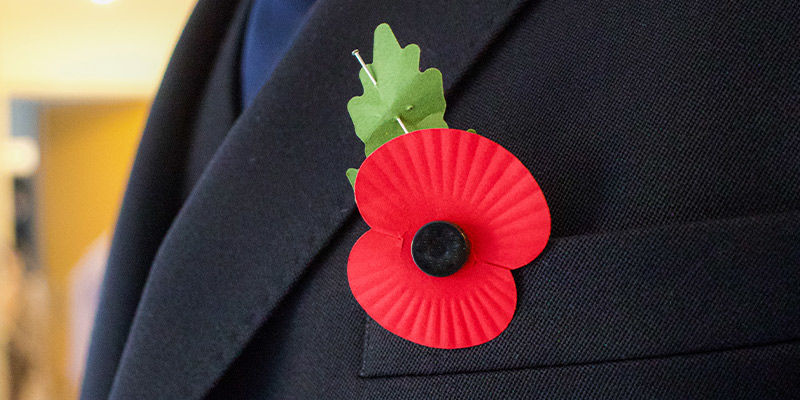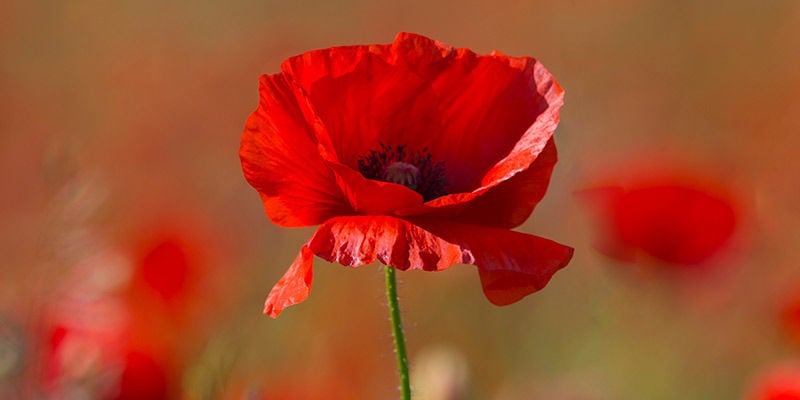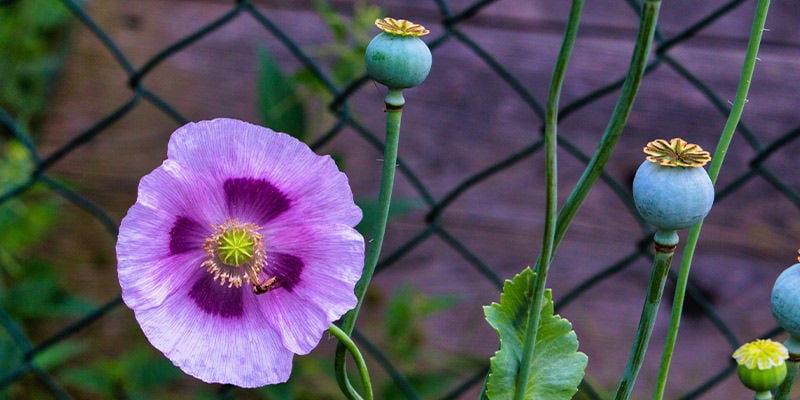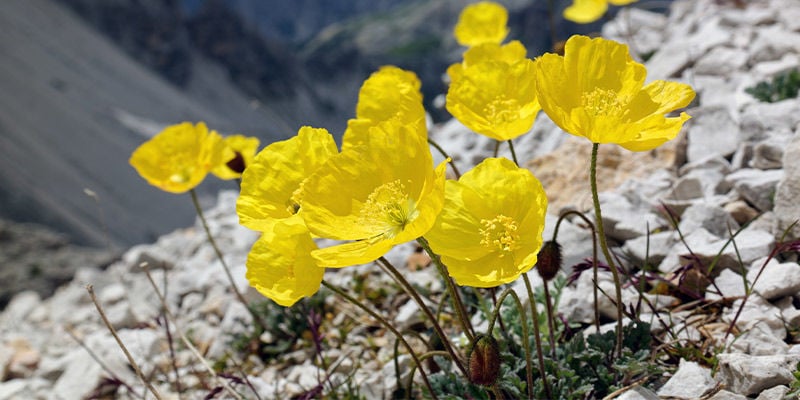
Everything You Need To Know About Poppies
With around 70 varieties of poppies available in the world, these herbaceous plants have plenty of uses. From holistic to symbolic and even narcotic, we take a look at everything you need to know about the most common poppies. So, if you're looking to cultivate these colourful plants from home, we've got you covered.
When it comes to poppies, our minds typically relate them either to the remembrance of soldiers during wartime or to the world of opium. However, while they're both technically poppies, there are many differences among the subfamily of Papaveroideae. In this article, we take a look at everything you need to know about the most common poppies.
How many poppy varieties are there?
So, just how many varieties of poppies are we dealing with here? Well, it's thought that there are well over 70 species belonging to the genus Papaver. Poppies not only provide plenty of colour and a unique appearance, but some varieties have long been utilised for their possible wellness benefits. Furthermore, the poppy is very symbolic among certain groups.
Symbolism of poppies

As mentioned, there is plenty of symbolism attached to poppies, more specifically Papaver rhoeas, or the “Flanders” poppy. It's this poppy that symbolises resilience, remembrance, and peace, and is strongly linked to World War I and Armistice Day. These poppies were a common sight in battle and even flourished in the soil that was torn and churned up by the shelling, explosions, and fighting that occurred on the Western Front. Of course, this is just one variety, as Papaver somniferum, known as the opium poppy, has strong connections to the world of narcotics, giving poppies plenty of other connotations.
Uses of poppies
Not only do poppies offer a great way to liven up any garden, due to their eye-catching colours, unique appearance, and enticing aromas, but they also have plenty of other uses. In fact, various poppy varieties have been used in traditional holistic practices for around 5,000 years. Though specific properties vary significantly between the different types of poppies, certain poppy supplements may help to promote healthy digestion and sleep while offering a soothing sensation.
Typically, these benefits are experienced by infusing fresh poppy petals into a syrup or tincture. That said, dried petals are also used to produce powdered extracts that can be added to foods and drinks, such as smoothies.
Of course, the opium poppy contains the alkaloids morphine, codeine, and papaverine. While these have obvious, long-standing medical applications, opium is more commonly associated with more illegal uses.
How to grow poppies
So, how can you grow some poppies for yourself? Well, you'll be pleased to learn that they're relatively effortless to cultivate, and with so many varieties available, it's easy to get paired up with a plant that will undoubtedly brighten up your growing space. Typically, poppies perform best in moist soil that's well-drained and exposed to plenty of sunlight and warmth. They're pretty unfussy plants, and can adapt to acidic, alkaline, or neutral substrates. Just provide a little upkeep and maintenance along the way, and they'll generally take care of themselves throughout the growing cycle. Be sure to sow your seeds around March–May, and come summer, you'll enjoy some eye-catching flowers.
Most common poppy varieties
With around 70 varieties to choose from, which poppies are the most common and time-honoured? From their symbolism and appearance to their applications, here are some poppy varieties that you’re bound to recognise.
Corn poppy (Papaver rhoeas)

Otherwise known as the common or Flanders poppy, this is the archetypal poppy variety, and often the type that many think of when the word “poppy” is mentioned. Known for its bright red colour and, of course, being synonymous with World War I remembrance, especially in the United Kingdom, the corn poppy is a hardy plant that generally reaches around 22–45cm tall and is easy to manage. It is unlikely to put gardeners through their paces, and can even be grown in colder conditions, making it an excellent choice for all. That said, for best results, make sure to provide well-drained soil and plenty of sunlight.
Opium poppy (Papaver somniferum)

Arguably the second most well-known variety of poppy, there's plenty to be said about the opium poppy. Due to the fact that opiate drugs such as heroin can be derived from this particular species, the plant is illegal to cultivate in certain countries. However, in the United States, it's possible to cultivate Papaver somniferum as long as it's not as a means of manufacturing opium. Of course, if you're looking to grow this variety of poppy for yourself, it's worth consulting your local authorities and checking the laws for your respective country. Much like other poppies, the opium poppy performs best in moist soil with plenty of sunlight. However, these poppies require plenty of space, as the plants can easily top out at around one metre in height.
Great scarlet poppy (Papaver bracteatum)

Also referred to as the Iranian or Persian poppy, the great scarlet poppy originates from the Caucasus region of the world and is harnessed for its potential wellness capabilities. Growing to around 120cm, this robust and resilient plant that can be found growing at altitudes of around 2,000m. Of course, you don't need to venture far and wide to get some of your own, as they can be easily cultivated from home. Like most other poppy varieties, the great scarlet poppy thrives in well-drained, moist soil with plenty of sunlight and warmth. Start your seeds off in early spring, and come May–July, you'll have some appealing colours adorning your growing space.
Alpine poppy (Papaver alpinum)

These bright yellow beauties are commonly found in wild, rocky environments and are extremely resistant to harsh weather conditions and droughts. This also makes them a great option for even the most novice or haphazard of gardeners. Thankfully, you don't have to go to the Alps to get your hands on these seeds, as they are readily available in most seed shops. These poppies are perennial and will reach heights of about 5–20cm, meaning they stay very close to the ground.
Oriental poppy (Papaver orientale)
Native to Asia, the Oriental poppy is a perennial plant that's bursting with bright colours for you to enjoy. Growers can anticipate deep oranges, reds, and salmon-like hues from plants that top out at 50–90cm. Sow those seeds in early spring, and they'll bloom come June–July. Provide your plants with well-drained and moist soil, but be sure not to overwater.
Growshop
Set up your grow the right way. Tents, lights, nutrients, propagation supplies, pots, and many handy accessories.
Get your hands on high-performing poppies today
Now that you’ve familiarised yourself with the world of poppies, the only thing left to do is try them for yourself! Fortunately, you don't have to look far to get your hands on the finest seeds around. Simply head over to the Zamnesia Plantshop, and you'll open yourself up to a massive variety of poppy seeds that will thrive in your home growing setup. Take your pick, and you can enjoy a bevy of colours and beautiful aromas in no time.






 United States
United States












